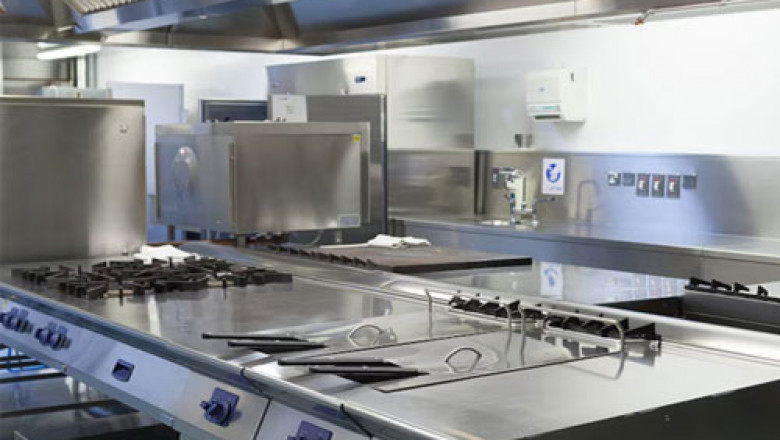views
Whether you're opening a new restaurant, running a cloud kitchen, or upgrading your existing setup, having the right commercial kitchen equipment is non-negotiable. It’s the backbone of food preparation, cooking, storage, and overall efficiency in any professional kitchen.
But with so many options on the market, choosing the right equipment can be overwhelming. This blog breaks down the essentials, helping you understand what’s needed and why it matters.
Why Commercial Kitchen Equipment Matters
Unlike household appliances, commercial kitchen equipment is designed for durability, speed, and large-scale production. It helps reduce cooking time, maintain food hygiene, and keep the kitchen running smoothly during peak hours.
Properly selected equipment can:
-
Improve workflow efficiency
-
Reduce energy consumption
-
Minimize food waste
-
Support consistent food quality
Essential Commercial Kitchen Equipment List
Here’s a rundown of the must-have equipment for a commercial kitchen:
1. Cooking Equipment
These are the workhorses of any kitchen.
-
Commercial Ranges & Ovens: Available in gas or electric. Combination ovens offer baking, roasting, and steaming all in one.
-
Griddles & Fryers: Ideal for fast-paced environments like fast food or casual dining.
-
Tandoor Ovens: Common in Indian kitchens for baking bread and cooking meats with a smoky flavor.
-
Induction Cooktops: Energy-efficient and safe to use, especially in small kitchens.
2. Refrigeration & Freezing Units
Food storage plays a crucial role in maintaining quality and safety.
-
Undercounter Refrigerators
-
Reach-in Coolers & Freezers
-
Walk-in Cold Rooms
-
Prep Tables with Built-in Cooling Units
Ensure your units maintain the right temperatures, especially in hot kitchen environments.
3. Food Prep Equipment
Speed and consistency are key during food prep.
-
Vegetable Cutters
-
Meat Slicers
-
Mixers & Blenders
-
Dough Kneaders
-
Wet Grinders
Using professional-grade machines cuts down prep time and improves portion control.
4. Storage & Shelving
A well-organized kitchen is safer and more productive.
-
Stainless Steel Racks & Tables
-
Wall-Mounted Shelving
-
Ingredient Bins
-
Dry Storage Cabinets
Stainless steel is the preferred material due to its durability and ease of cleaning.
5. Dishwashing & Sanitation Equipment
Hygiene is not optional—it’s a must.
-
Commercial Dishwashers
-
Sink Units
-
Grease Traps
-
Hand Wash Stations
Investing in proper sanitation equipment also ensures compliance with local food safety laws.
6. Exhaust & Ventilation Systems
Proper ventilation ensures the kitchen is safe and comfortable for the staff.
-
Hood Systems with Filters
-
Ducting and Exhaust Fans
-
Makeup Air Systems
A good ventilation setup reduces smoke, odors, and heat accumulation.
Things to Consider Before Buying
-
Menu Type: Your equipment should align with the food you’re serving.
-
Kitchen Layout: Measure your space. Oversized equipment can disrupt flow.
-
Energy Efficiency: Go for equipment that saves power and cuts costs long term.
-
After-Sales Support: Always choose brands that offer warranties and reliable service.
-
Compliance: Ensure the equipment meets local food safety and fire codes.
Final Thoughts
Setting up a commercial kitchen requires planning and investment, but choosing the right equipment can make all the difference. It’s not just about buying heavy machines—it’s about building an ecosystem that helps your staff work better, faster, and safer.
Whether you’re in Delhi or any part of India, always source your equipment from a reputed supplier who understands the specific needs of your kitchen.
Need help with selection or setup? Contact a professional commercial kitchen planner for guidance that saves time and money.














Comments
0 comment